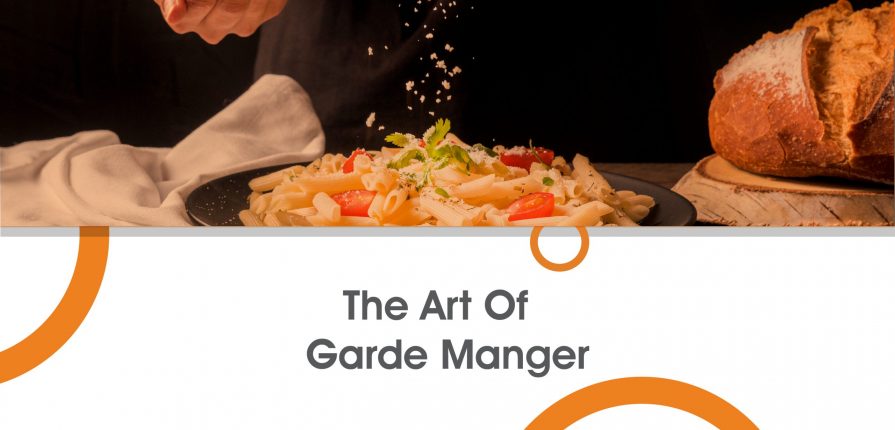Back before the dawn of refrigeration, preservation of food included pickling, curing and air-drying. Other foods needed to be kept and served cold, stored in a cellar cooler than the kitchen. Chefs were employed solely to manage this section i.e ‘keep the food’ or garde manger.
Today, garde manger refers to the role of the chef who oversees the production of cold food as well as the area in the kitchen where it takes place. They are involved in preparing a wide range of food including smoked and cured items, salads and their dressings, sausages, patés, terrines, cheeses, pickling foods and condiments, cold sauces and soups.
Roles & responsibilities
The specific job description of a garde manger will vary depending on the establishment that hires them. They may focus on salads and cold desserts at a small restaurant, or look after entire sections of buffet presentations at large hotels.
Salads and cold soups are typically served at the start of a meal, with cold desserts served last. These will be the first and last impressions a guest will have of the eating establishment, and the burden of this lies squarely on the shoulders of a garde manger.
Skills required
Typically, a garde manger role is an entry-level position, but can be pretty demanding. Chefs with excellent presentation skills will do well as garde mangers. They must be able to plate salads, charcuterie boards, desserts and the like on the fly to reduce delays in the service of the following courses.
In smaller restaurants, the garde manger might also need to season ingredients before they are cooked. In larger establishments such as hotels, they will be responsible for décor made of food. These could include elaborate centrepieces at buffets or fine dining set ups made of fruit and vegetables, cheese, cake, butter, ice and other items.
Given that the garde manger looks after presentations, they must also be adept at making delicate garnishes for a variety of dishes, working fast to avoid delays without making a mistake. This requires steady hands and nimble fingers for precise yet quick movements.
Foods handled
A garde manger is generally required to take care of salads and cold items from scratch. This means not only plating salads and the like but also preparing them. These include salad dressings and cold soups such as gazpacho, vichyssoise and borscht. They also include spreads such as hummus, pates, aioli, bacon jam, mayonnaise, chutneys, nut butters, tapenade, pesto, tahini and others.
The garde manger is also in charge of cured meats and pickled vegetables. Asian restaurants, in particular, use a wide variety of pickled veggies, from the Korean staple kimchi and Japanese takuan-zuke to Vietnam’s dua chua and the achaar from India and Pakistan. In Europe, sauerkraut and pickled beets are common as are pickled onions and gherkins. In the Americas, the garde manger will look after pickled chilli peppers, celery, okra and olives.
Career progression
Today, garde manger positions are interchanged with those of pantry chefs and salad station chefs. Any of these positions, however, would require a robust education at a quality culinary arts school such as KCCA, where strong foundations are set in charcuterie, patisserie and general culinary arts.







Leave a Reply